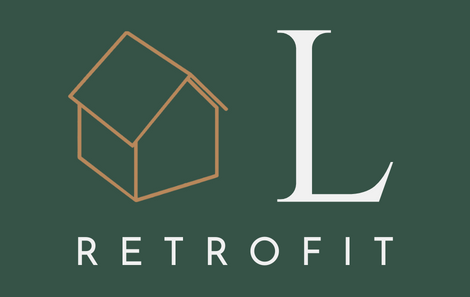
Retrofit Services
All You Need to Know About Retrofit.
-
A Retrofit Assessment recognises that every household will live in and use their home differently, therefore it will include a review of the existing occupancy and behavioural impacts on energy use. Things such as when and for how long the heating is turned on each day and at what temperature.
A Retrofit Assessment will also consider the internal and external condition, note defects, confirm mechanical and natural ventilation present and identify any energy efficient measures which would not be possible to install or suitable due to planning constraints or building features present.
-
Piecemeal improvements may work well but tend to be carried out in isolation, without consideration of the knock-on effects. For example, many homeowners will have had a chimney blocked off, or draughty window frames replaced with modern options. Whilst these improvements will reduce heat loss, they may also have a knock-on effect on ventilation, causing an increased build-up in moisture. Without additional ventilation measures being taken, there’s a danger that humidity will rise to an unacceptable level, potentially increasing the risk of damp and mould.
Similarly, without expert input, it’s all too easy to spend on an improvement which doesn’t give optimal results. For example, a homeowner may decide to install solar panels, when actually they might enjoy a greater return on their investment through the installation of solid wall insulation.
It’s also the case that some measures may have an adverse effect on others if carried out in the wrong order: wall insulation, for example, may be damaged if the windows are replaced at a later date. A retrofit plan takes account of these considerations, resulting in a logical, highly effective pathway towards an energy-efficient, well-ventilated home.
-
Homeowners who invest in a whole-house retrofit can expect to enjoy:
– an energy-efficient home with a lowered environmental impact.
– a home that’s in good repair.
– a home where damp and condensation is eliminated.
– a healthy home with good indoor air quality and improved ventilation control.
-
A qualified Retrofit Assessor will start by asking where services are located in your home and if you have noticed any damp or condensation issues throughout your property.
They will then take room by room measurements and photographs, access the loft space and walk around the external elevations.
The assessor will take notes on any defects, planning constraints, lack of ventilation and energy efficiency measures already installed, this information will then be used to identify where improvements may be necessary, or where features may prevent certain recommendations. For instance, not all properties will be able to have external wall insulation if they need to preserve existing external features.
The assessor will also gather information from the occupants to understand how they use the building (work from home, heat the building for 4 hours per day at 22degrees) and their last 12months fuel usage.
Following the survey, a Retrofit Coordinator will use the assessment to produce a detailed whole house improvement plan including estimated costs of work that can be undertaken, estimated energy savings for each set of measures and the amount of carbon reduction that can be made in each phase.
The recommendations will be considered against the assessment to ensure they complement each other and do not cause unintended consequences such as damp due to lack of ventilation, where a once leaky building is made more air tight by installing insulation.
-
If you’re considering opting for a whole house retrofit, it’s usually best to discuss it with a certified Retrofit Coordinator who will be able to provide you with the additional information you need to decide if it’s right for you and your home.
L RETROFIT are TrustMark registered, complying with PAS2035:2019, the modern retrofit regulations which lay out what’s needed to conduct a retrofit successfully. We offer unbiased, expert advice on suitable energy improvements and thier cost/carbon benefits.
A Whole House Plan will consider all suitable improvements and package them into phases to suit a homeowners needs.
The below is an example of three phases of work, and the result of each phase in terms of upfront costs, fuel and carbon savings and target EPC ratings.

